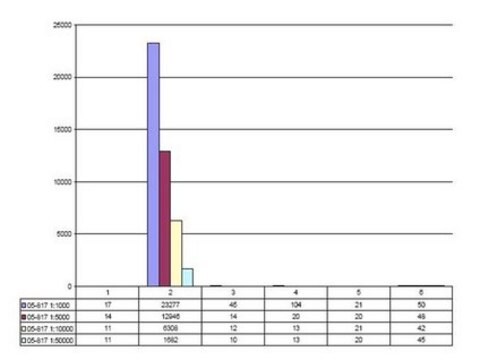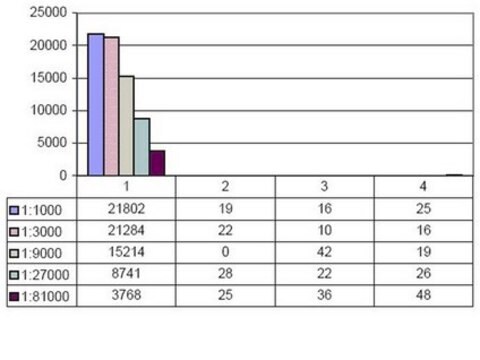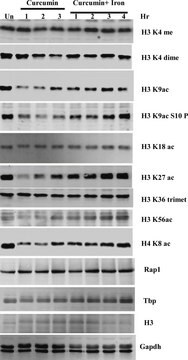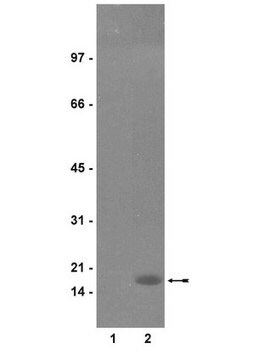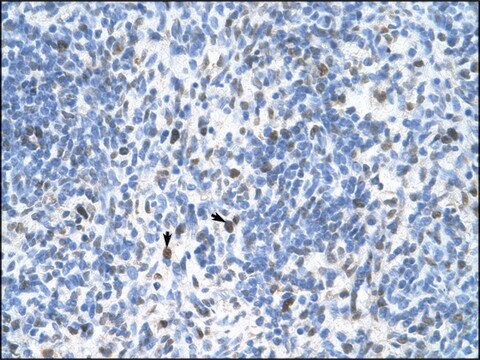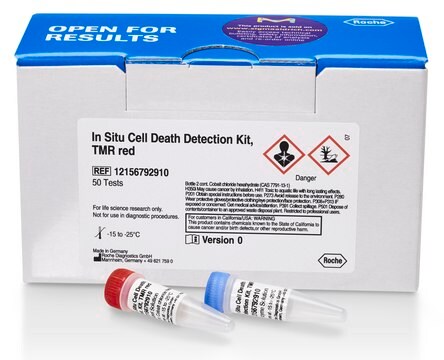07-424
Anti-phospho-Histone H3 (Thr3) Antibody
Upstate®, from rabbit
Sinônimo(s):
H3T3P, Histone H3 (phospho T3)
About This Item
Produtos recomendados
fonte biológica
rabbit
Nível de qualidade
forma do anticorpo
unpurified
tipo de produto de anticorpo
primary antibodies
clone
polyclonal
reatividade de espécies
mouse, human
fabricante/nome comercial
Upstate®
técnica(s)
immunocytochemistry: suitable
inhibition assay: suitable
western blot: suitable
nº de adesão NCBI
nº de adesão UniProt
Condições de expedição
dry ice
modificação pós-traducional do alvo
phosphorylation (pThr3)
Informações sobre genes
human ... H3C1(8350)
Descrição geral
Especificidade
Imunogênio
Aplicação
Evaluated by Western Blotting in acid extract from colcemid-treated HeLa cells.Western Blotting Analysis: A 1:5,000 dilution of this antibody detected Phospho-Histone H3 (Thr3) in acid extract of colcemid treated (50 ng/mL, overnight) HeLa cells, but not the recombinant Histone H3 protein.
Tested ApplicationsPeptide Inhibition Assay: Target band detection in acid extract from colcemid treated (50 ng/mL; overnight) HeLa cells was prevented by preblocking of a representative lot with the immunogen phosphopeptide, but not with non-phosphorylated Histone H3 peptide.Immunocytochemistry Analysis: A 1:500 dilution from a representative lot detected Phospho-Histone H3 (Thr3) in NIH3T3 cells.Note: Actual optimal working dilutions must be determined by end user as specimens, and experimental conditions may vary with the end user.
Qualidade
Descrição-alvo
forma física
Armazenamento e estabilidade
Nota de análise
Acid extract from colcemid-treated HeLa cells
Informações legais
Exoneração de responsabilidade
Não está encontrando o produto certo?
Experimente o nosso Ferramenta de seleção de produtos.
Código de classe de armazenamento
12 - Non Combustible Liquids
Classe de risco de água (WGK)
WGK 1
Ponto de fulgor (°F)
Not applicable
Ponto de fulgor (°C)
Not applicable
Certificados de análise (COA)
Busque Certificados de análise (COA) digitando o Número do Lote do produto. Os números de lote e remessa podem ser encontrados no rótulo de um produto após a palavra “Lot” ou “Batch”.
Já possui este produto?
Encontre a documentação dos produtos que você adquiriu recentemente na biblioteca de documentos.
Nossa equipe de cientistas tem experiência em todas as áreas de pesquisa, incluindo Life Sciences, ciência de materiais, síntese química, cromatografia, química analítica e muitas outras.
Entre em contato com a assistência técnica


